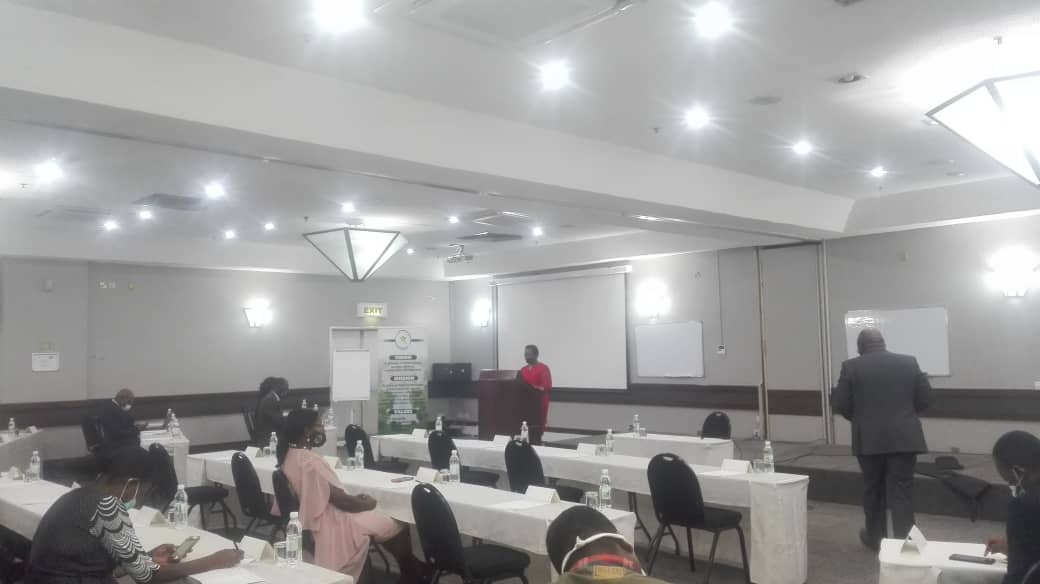By Anyway Yotamu
Zimbabwe is a low-income country whose economy and livelihoods depend hugely on natural resources with an ambition to leapfrog it to a middle-income economy by 2030. The backbone sectors namely mining, manufacturing, agriculture, and tourism rely heavily on forest, land, and water resources for inputs to the production of goods and services. This means that the physical environment determines GDP and economic growth.
Addressing members of the Parliamentary Portfolio Committee on Environment, Climate and Tourism and other stakeholders at a Capacity Building Seminar in the capital, the UNDP’s environment cluster represented by the Team Leader in the Poverty Reduction, Environment and Climate Change programme, Ms Anne Madzara said, “Under the current scenario, progress towards environmental sustainability has been insufficient. Zimbabwe already faces a number of daunting environmental challenges including deforestation, land, air, and water pollution; soil erosion; land degradation, loss of biodiversity, and contamination and pollution from poor mining practices and domestic and industrial waste management,” Madzara said.
There is a need to sustain a functional ecosystem and good response strategies to attain the vision of a middle income economy by 2030, Madzara said.
“It is expected that climate variability and change will exacerbate these challenges, increasing pressure on natural resources, impacting ecosystem services and agricultural productivity, and disproportionately affecting the poor. Ensuring sustainable use of natural resources, maintaining well-functioning ecosystems, and implementing a viable climate change response strategy remain important for the 2030 middle income vision to be attained where we should ensure sustained growth and lasting prosperity,” she said.
Zimbabwe is one of the countries in the region with a robust legislative, policy, and institutional framework for environmental management and is a signatory to a range of multilateral treaties on the environment, biodiversity protection, and climate change as well as an impressive Constitution guaranteeing the right to a safe environment, and there is commitment to review all legislation and policies to achieve this mandate.
She added that, “The Environmental Management Act of 2003 (not withstanding the fact that it is outdated) and the National Environmental Policy of 2009 remain the foundation for all of the country’s environmental policies and programs, focusing on the sustainable use and protection of natural resources, including water quality. Despite being guided by a robust legal, policy and institutional framework, and despite having high level of biodiversity with global significance, Zimbabwe’s climate change, environment and natural resources management sector faces multiple challenges resulting in biodiversity loss, ecosystem degradation, reduced water quality and climate change consequences.
“Some of the key challenges include, High deforestation whose rate has accelerated from 100,000 ha per annum in the 1990s, to 327,000 ha per annum (1.9 percent) between 2000 and 2010 and is now the highest in southern Africa (FAO 2011). For the period 2009-2018, annual forest area loss (based on crown cover of 10%) was estimated at 32,000 ha per annum (GoZ, 2017). The main drivers of deforestation include land clearance for agriculture and in particular tobacco production activities,” said Madzara.
Speaking at the same occasion, the Chairperson of the Parliamentary committee on Environment climate and Tourism, Honourable Concilia Chinanzvavana aired the same sentiments.
“As we gather here today, let us bear in mind that the regenerative capacity of our environmental ecosystems has now been exceeded by human activities on the very same environment. Such a development is contrary to the sustainability concept which all of us subscribe to. Human activities are degrading the environment that our survival solely depends on. Just to shed more light to what I am referring to, the mining sector’s positive economic developments have put unprecedented pressure on the environment, and this impressive growth, has unfortunately been associated with high levels of pollution as well as massive environmental degradation caused mainly by artisanal mining.
“Agricultural expansion has not only been associated with causing deforestation and soil erosion, it has also resulted in an increase in the use of polluting chemicals such as fertilizers, herbicides, insecticides and fungicides. The curing of our tobacco using fuel wood has denuded large areas of indigenous woodlands. The harvesting of fuel wood and veld fires are also causing untold biodiversity loss,” Chinanzvavana said.
Zimbabwe is also faced with the challenge of managing emerging waste. She said the waste has significant impact on the environment and should therefore be given priority in national work programmes.
The disappearance and immense degradation of wetlands greatly compromise on the quality of benefits embodied by them. These and many other examples of environmental degradation have caused stakeholders to congregate at the seminar and find areas of cooperation to eradicate and where possible reverse the trend.
Environmental issues are very much interconnected and cross cutting and consequently an all-inclusive stakeholder collaboration and cooperation is not an option but a must. Pursuant to this combined and teamwork initiative, as guided by the Constitution and the Standing Rules and Orders, Chinanzvavana said the Committee strives to lead in environmental protection and conservation, hence, the need to capacitate and support the Committee to develop sound natural resources management and environmental protection oversight skills can never be over-emphasized.
Unregulated Mining has contributed to massive disturbances to riverbeds, soil erosion, landslides, and siltation.
According to Government statistics over the past 5 years, between 1-1.2 million hectares are burnt annually.
Inadequately treated municipal wastewater, inadequate sanitation facilities in rural areas, and poorly regulated chemical releases (such as mercury from artisanal mining) and siltation resulting from poor land use planning and land use practices are key threats to water quality.
